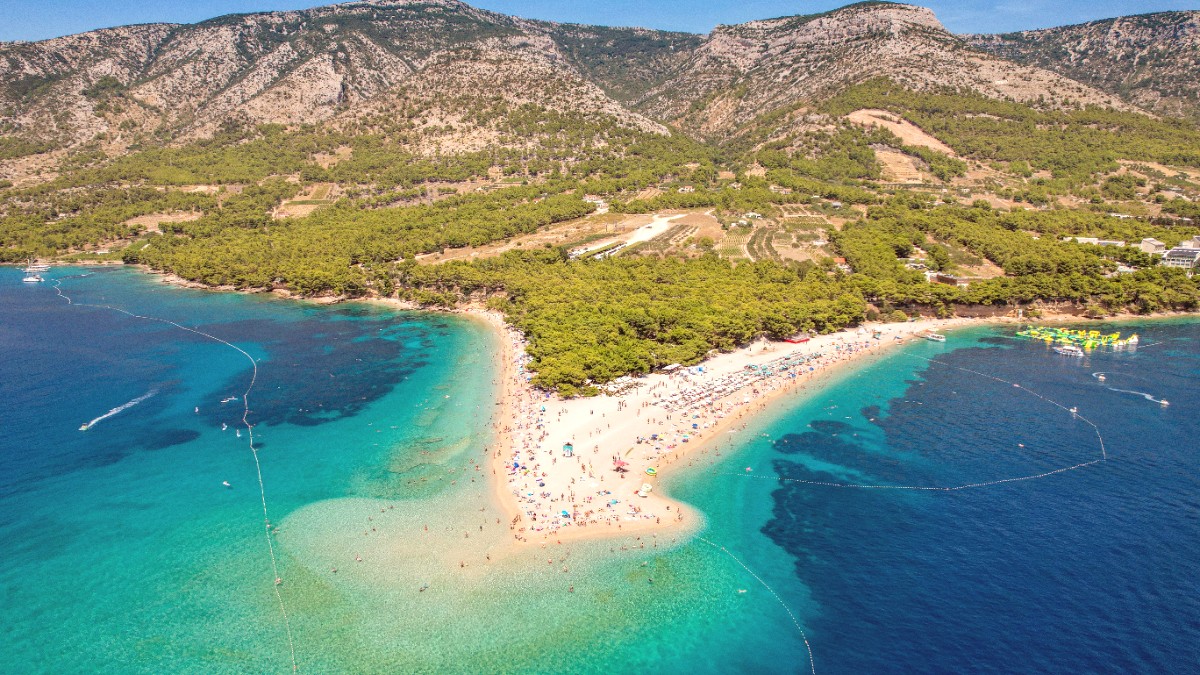
Croatia
This is Brac Island, Croatia's largest Dalmatian gem, a place where natural beauty meets rich history and a relaxed island pace. Brac holds sun-drenched beaches, rugged landscapes, and a genuine Croatian island experience. Uncover the secrets of this remarkable island, from its ancient stone quarries to its culinary delights, and make your trip truly memorable.
Brac Island is a deep and varied history, stretching back millennia. People lived here since the Neolithic period. Ancient Greek colonies and Roman rule followed, shaping its practices.
The island's world-renowned white stone, Brac stone, a high-quality limestone, quarried for centuries, appears in significant buildings globally. Reports suggest parts of the White House incorporate Brac stone, alongside famous European structures like Diocletian's Palace in Split. Venetian rule (15th-19th century) left a lasting impact on architecture. The Blaca Hermitage, a monastic complex built into a cliff, reflects an unique past.
Brac presents a distinct island experience, combining natural allure with a deep cultural heritage. Its identity as a Mediterranean island means hot, sunny summers, mild winters, and a pace of life that encourages relaxation. The island's diverse features make it a destination for various interests.
Brac's economy draws on traditional sectors alongside growing tourism. Olive oil production has a long history, with many family-run groves. Fishing remains a livelihood, supplying fresh seafood. The island's famous stone quarrying continues, linking to its ancient past and providing economic activity. This blend of industries gives Brac an authentic feel.
Zlatni Rat beach, the Golden Horn, near Bol, extends into the sea, its tip shifting with winds.
Approximately 13,956 residents (2021 census).
Croatian. English widely spoken in tourist areas.
Pine forests, vineyards, arid karst regions, and many beaches.
Charming stone villages, built from local white stone.
Brac truly presents a complete Mediterranean island experience, blending activity with relaxation and culture with nature. The island's combination of features creates a rich and varied environment for visitors to explore.
The famous Zlatni Rat beach, often called the Golden Horn, is the island's main attraction. Near Bol, this unique pebble beach extends into the sea, its tip shifting with changing winds and currents. It is a natural wonder and a popular spot for sunbathing and watersports.
Brac's diverse features make it a destination for various interests, from beach lovers to history buffs. Its large size accommodates diverse landscapes and many towns, yet the island remains small enough to explore comprehensively during a vacation.
This blend of traditional industries and natural beauty sets Brac apart from purely tourist-driven destinations.
Brac Island is a deep and varied history, stretching back millennia. People lived here since the Neolithic period, with evidence of early settlements and ancient caves showing the island's long human story. Over time, various civilizations left their mark on Brac. Ancient Greek colonies established trading posts, using the island as a strategic point. Roman rule followed in the 1st century AD. Romans built villas, left sarcophagi, and developed olive presses, shaping agricultural practices that continue today. The remnants of these structures speak to a thriving Roman presence.
The island's world-renowned white stone, Brac stone, is a testament to its enduring historical importance. This high-quality limestone has been quarried for centuries, used in significant buildings across the globe. Reports suggest parts of the White House in Washington D.C. Incorporate Brac stone, alongside famous European structures like Diocletian's Palace in Split, an UNESCO World Heritage site. This legacy of stone masonry continues today, with a stone carving school in Pučišća preserving ancient techniques.
During the Middle Ages, Brac fell under Byzantine rule, a period that saw the development of early Christian basilicas. In the 15th century, the island became part of the Venetian Republic, remaining under its influence for nearly four centuries. This Venetian period left a lasting impact on architecture and culture, reflected in charming Venetian-style buildings.
After Venetian rule, Brac experienced periods under Austrian, French, and Italian control, each leaving its own imprint on the island's character. In the 20th century, Brac became part of Yugoslavia, before finally becoming part of independent Croatia in 1991.
The Blaca Hermitage (Pustinja Blaca) an unique historical complex, reflects a particular aspect of Brac's past. This monastic complex, built into a dramatic cliff face, shows a distinctive monastic life from the 16th to the early 20th century, a testament to human perseverance.
Exploring Brac means walking through layers of history, where every stone and village tells a story of survival, adaptation, and cultural exchange.
Brac Island holds the title of the largest island within Dalmatia, Croatia, and the third largest in the entire Adriatic Sea.
Vidova Gora, the island's highest point, stands 778 meters above sea level, ranking as the highest peak on any Adriatic island.
The island's population numbers approximately 13,956 residents, based on the 2021 census.
The island's main ferry port and administrative center, located on the north side.
Located on the south coast, this town draws crowds with its iconic Zlatni Rat beach.
A serene harbor town situated on the west side of the island.